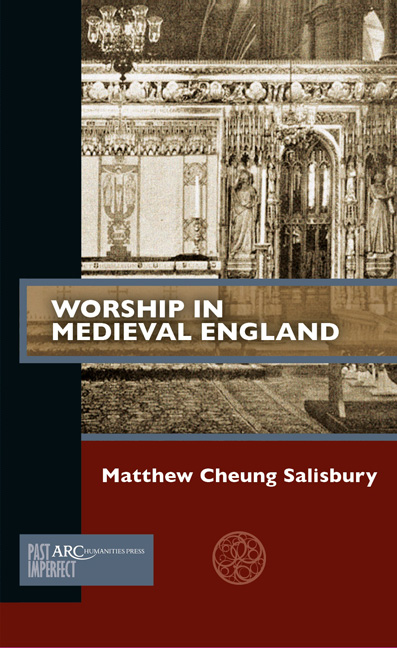Chapter 2 - Participation and Devotion in Worship
Published online by Cambridge University Press: 27 January 2021
Summary
If you were somehow able to travel back in time to the Middle Ages and to attend a service in church, there might well be some features which would be recognizable from liturgically traditional churches of the present day. Along with familiar architectural features and a recognizable layout of the church building, one might be aware of the position of the congregation in the nave, physical separation from the altar and ministers, the presence of musicians, servers, clergy, and others carrying out specific roles, and stylized ritual actions which would help to tell the “story” of the service. There might be a sermon. If the service was a Mass, the focus would be on a solemn remembrance in words and actions of the Last Supper shared by Jesus with his disciples. There would also be dialogues between the officiating minister and others, mirroring the cyclical nature of the liturgy between praise and petition, or between heaven and earth, in a human sphere and context.
This is not to say that one would feel entirely at home with a medieval liturgical celebration. The service would be in Latin. If celebrated at the main altar of a church, any meaningful action would take place in an area probably quite separate from the congregation, if any, and the congregation, if indeed there was one, quite likely would not interact with the clergy and choir, who would be concerned with their own parts of the service, which, while linked, were carried out quite independently. These striking features of the imagined medieval liturgy, together with what remains in the collective memory about the liturgy of the Roman Catholic Church before the Second Vatican Council (1962– 1965, before which Catholic liturgy had been more or less similar in form since the Council of Trent in the sixteenth century), cause us to believe that medieval services would have been difficult to follow and hard to understand, and that they did nothing to encourage the personal faith and spirituality of the individual worshipper. Quite unfairly, modern accounts tend to do a very good job of criticizing the medieval liturgy for not having all the things that modern church services aspire to: variety, an emphasis on the individual worshipper's experience (whether exegetically, spiritually, or kinaesthetically), and— above all— participatory elements, meaning especially the opportunity to contribute by speaking or singing.
- Type
- Chapter
- Information
- Worship in Medieval England , pp. 41 - 64Publisher: Amsterdam University PressPrint publication year: 2018



